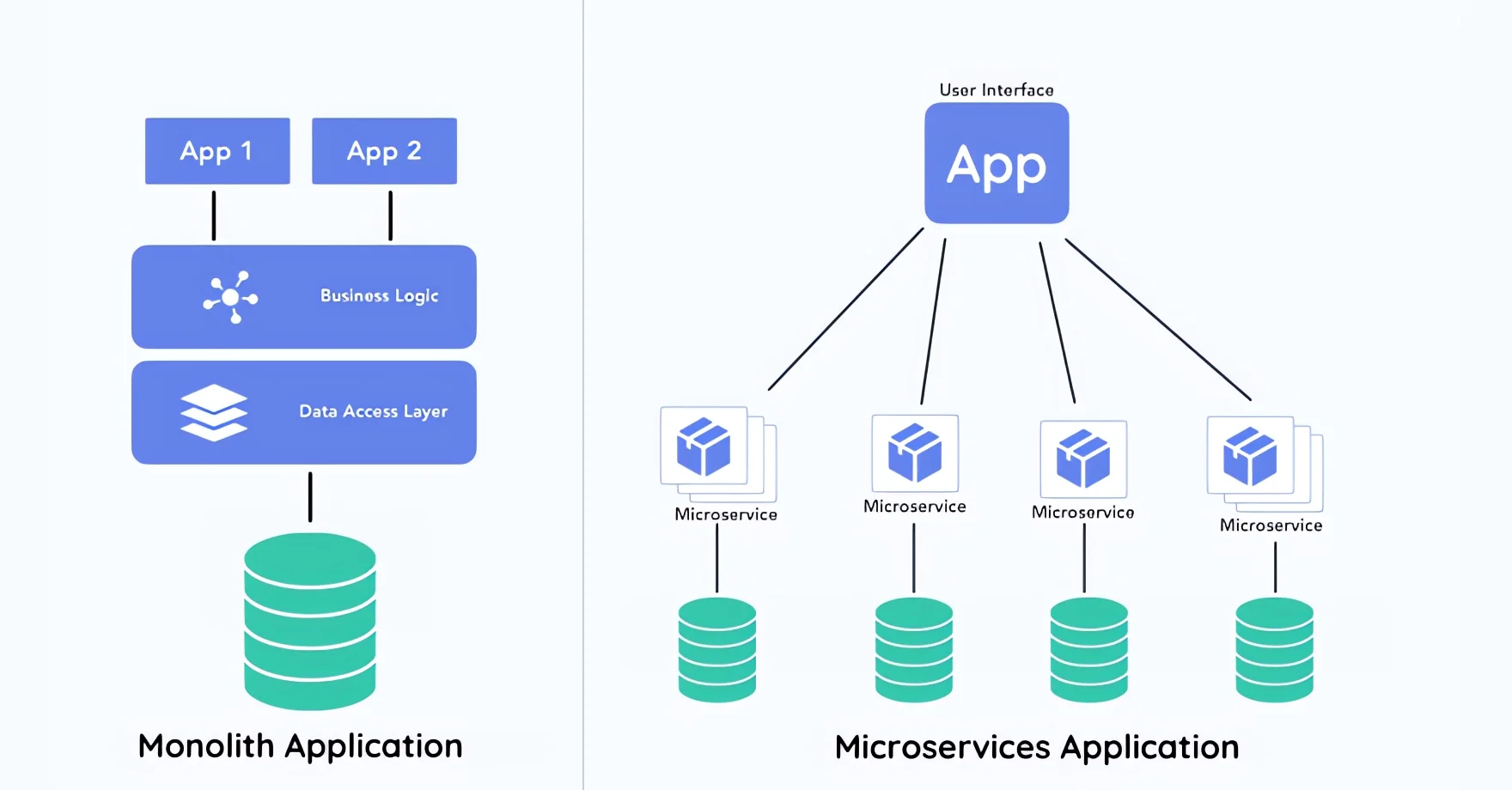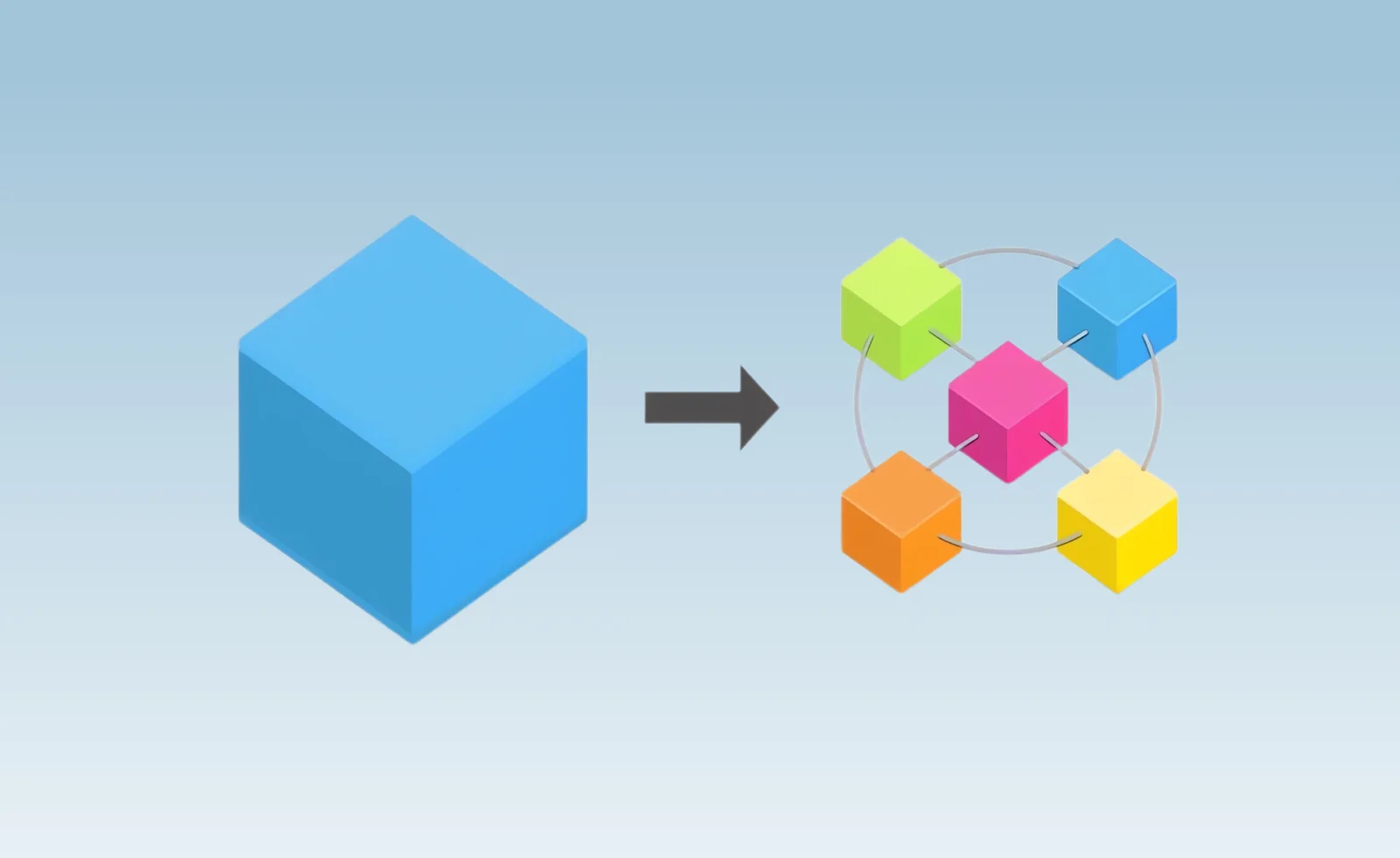Moving to a microservices architecture is a wise choice if you want to release software faster and with less risk. A lot of progressive businesses give priority to this change. When your company is prepared for the shift, it is critical to comprehend its application requirements to guarantee the appropriate level of service quality, scalability, flexibility, and overall success.
In this article, we have examined the specifics of microservices architecture for ecommerce and how it helps companies stay competitive by enabling them to adapt to the always-changing needs of the market.
What is a Microservices Architecture?
Microservices architecture, often called microservices, is an architectural approach to application development. It involves breaking down an extensive application into smaller, autonomous components, each with a distinct set of responsibilities. Multiple internal microservices can be invoked simultaneously in a microservices-based system to answer a single user request.
An appropriate example of a microservices architecture is containers, which free developers from worrying about dependencies and let them focus on creating services. These days, cloud-native apps are typically built as container-based microservices.
The Main Differences between Microservices and Monolithic
Monolithic applications share a single code base that powers server-side features, a database, and a client-side user interface. As part of a distributed architecture, microservices, on the other hand, communicate via APIs instead of a joint code base and concentrate on specific features or business logic.

Monolithic apps require less upfront planning and are easier to start in development. They can, however, grow complicated and challenging to update. Because microservices require developers to identify independent functions and build consistent APIs, they need more planning ahead of time. This pays off through efficient code maintenance, faster problem diagnosis, and better code reusability.
Monolithic applications can be easily deployed by installing the whole code base in a single environment. The deployment of microservices is more complex, requiring containerization for independence. While debugging microservices involves loosely connected services and requires coordinated efforts and more time, debugging monolithic architecture is more accessible inside the same programming environment.
When it comes to updates, monolithic adjustments have an effect on several functions, requiring the system to be redeployed and tested again. Microservices for ecommerce provide flexibility by enabling separate service deployment and modifications to specific functions, enabling continuous deployment procedures without causing system instability.
There are difficulties in scaling monolithic programs because doing so implies scaling the entire program, which wastes resources. Distributed systems are supported by microservices, which enable independent component scaling based on available resources and anticipated demand.
Benefits of Microservices Architecture Development Services
There are various benefits to using microservices architecture development services, improving a system’s overall scalability, adaptability, and efficiency.
The following are some of the main advantages:
- Separation and Flexibility:
An application can be divided into more minor, separate services using microservices. Because of its modularity, individual services may be updated, modified, and maintained more easily without affecting the system as a whole. Teams can independently work on several services, which encourages flexibility in deployment and development. - Scalability:
Microservices for ecommerce are scalable on their own, according to the particular requirements of each service. Better resource usage will result from being able to scale only the components that need more capacity and allocate resources in an efficient manner. - Error Isolation:
A breakdown in one microservice does not always impact the system as a whole because microservices function independently. This isolation increases the robustness of the system as a whole and reduces the impact of faults. Debugging and troubleshooting are frequently made simpler when problems are limited to particular services. - Technology Diversity:
Teams can select the best tools for each unique assignment by leveraging the various programming languages or technologies that can be used to construct each microservice. This makes it possible to implement the tools and technologies that are most appropriate for each service’s needs. - Quick Deployment and Ongoing Delivery:
A more flexible development method is made possible by microservices. Teams are able to provide upgrades and new features more frequently with smaller, autonomous services. This shortens the time to market and makes it possible to react to shifting company needs more quickly. - Resource Efficiency:
Because each microservice may be deployed on the proper infrastructure according to its unique requirements, microservices provide efficient resource allocation. Better use of computing resources and cost reductions are the outcomes of this. - Enhanced Development Speed:
Many teams can work on different microservices architecture development services concurrently by enabling parallel development and eliminating dependencies. This quickens the delivery of features and enhancements as well as the entire development lifecycle. - Simple Third-Party Service Integration:
Microservices have a simple API and third-party service integration process. In today’s interconnected world, interoperability is essential since it enables enterprises to easily utilize external services and data. - Enhanced Fault Tolerance and Resilience:
When problems are limited to certain services, the system as a whole can continue to operate even when some services encounter problems. This enhances the availability and resilience of the system.
Reasons to Move to Microservices for Ecommerce?

By breaking down monolithic frameworks into more minor, more manageable services, microservice architecture has completely changed how businesses develop and oversee their software systems. Because every part of a monolithic system is tightly connected, it might be challenging to execute updates or modifications without impacting the entire application.
The system is divided into separate, modular services by microservices, which allow for individual development, deployment, and scaling. Because of this decoupling of services, businesses can alter individual parts of the system without affecting the system as a whole, which promotes flexibility and agility in response to changing business requirements.
Microservices Architecture Development Services’ scalability and autonomous deployment significantly accelerate development and deployment processes. Because every microservice runs independently, teams can work on multiple services simultaneously, which expedites the development process.
Moreover, the capacity to scale discrete services autonomously guarantees effective resource management since only the essential elements may be enlarged to accommodate growing demand. In addition to improving performance, this granular scalability helps businesses allocate resources optimally, lowering over-provisioning expenses.
Microservices design provides a strategic advantage in today’s fast-paced marketplaces by enabling quick responses to changes and obstacles. Microservices architecture development services facilitate swift response to market demands by organizations by speeding up the development and implementation of new features or modifications to current ones.
This agility is critical in sectors where creativity and adaptability to consumer demands can spell the difference between success and obsolescence.
Businesses that adopt microservices are competitive because the architecture is designed to allow for constant evolution and improvement in response to changing market conditions.
To sum up, using microservices architecture for ecommerce signifies an essential evolution for companies looking to become more agile in today’s fast-paced market environment. Companies may handle the constraints of rapid technological progress and shifting business requirements with remarkable flexibility by dismantling monolithic systems into modular, autonomous services.
The strategic advantage provided by microservices is becoming increasingly apparent as industries continue to change, allowing firms to stay up with market expectations and take proactive measures to address obstacles.
Adopting microservices is a strategic requirement as well as a technological one for companies hoping to stay ahead of the curve and succeed over the long term in the rapidly evolving fields of technology and business.
Related Articles:
- How Micro-segmentation Protects Enterprises from Cyberattacks
- Ecommerce Fraud Prevention Software – Preventing Fraud on Your Online Store
- Revolutionizing B2B Ecommerce: Mobile Optimization Strategies for Success
- Going Headless: Benefits, Challenges, and the Best Headless Commerce Platforms
- Best Practices and Strategies for a Secure Software Development Life Cycle (SDLC)
- Tailored Software Development: A Catalyst for Your Business Growth
- Benefits of Using DevSecOps for Software Development
- What is FinOps as a Service and How it Works in an Organization
- All About Microgaming Slots and Their Cutting-Edge Software Technology
